Music is the universal language
“Glory to God in the highest heaven, and on earth peace to those on whom his favor rests.” - Luke 2:14
General Interest
Winnipeg’s Living Hour Control the Chaos

“Stainless Steel Dream,” the leadoff track from Living Hour’s fourth record, Internal Drone Infinity, begins with a manic, glitchy din. The sonic assault ends abruptly, swiftly contained, giving way to a lone bass and singer Sam Sarty's hushed opening lines: “Pink hair straightener, baby, messy messy dresser in a dark room, empty.” Less than 60 seconds goes by before the Winnipeg-based band ascends into a squall of noise and just as quickly calms themselves again. Internal Drone Infinity is defined sonically and lyrically by this tension—the push-and-pull between order and chaos, quiet and loud, inner and outer universes.

“I was thinking a lot about how anxiety and thoughts exist in your body and in the small decisions you make everyday and in what you see in the world,” Sarty says over the phone from her grandfather's house on Vancouver Island. “Your whole life is based on your perception of what you’re seeing. Then I thought about how anxiety and busy thoughts color that and affect it and change your whole life. When I’m feeling really extreme, I think, ‘Oh yeah, you could just die because a bee would buzz into your face and you’d freak out and fall off a cliff or something.’”
A typical response to existential dread is often grasping for control. On Internal Drone Infinity, this manifests in Living Hour’s gravitation toward precision in the midst of turbulence—in moments like the spiralling outro of “Wheel” or the feedback-heavy ease-in to “Big Shadow,” it’s as if the band has simply figured out how to put their hands around noise and turmoil and shape them to their whim. This move toward punchiness and away from the gentler, gauzier sounds of 2022’s Someday Is Today could be attributed to a number of things—the scientific rigor with which guitarists Gil Carroll and Adam Soloway tend to their tones, Sarty’s writing more guitar parts, or Carroll’s shift from mostly clean sounds to incorporating fuzz, distortion, and overdrive. (“Swiss army knife” multi-instrumentalist Brett Ticzon also handles a few guitar details, while drummer Isaac Tate plays one upside down on “Big Shadow”).
“We were kind of inspired by the band Superheaven, who I’m sure play their guitars through these massive stacks and get huge, huge guitar chord tones,” Soloway says. “But we were still working with our little amps, so we would be recording six different guitars doing different versions of a chord to try to make it sound as huge as possible, stacking them on top of each other.”

It’s likely, though, that the most significant change is that Sarty is confronting some of that aforementioned dread defiantly instead of turning away or opting for resignation. “Everyone’s kind of angry, we’re getting pissed, the world is fucked, and sometimes it feels like I can’t just be in a nice indie rock band anymore playing twinkly things,” Sarty says. “It’s still nice to do that, but I think there needs to be a release, a scream or a grunt or something.”
Internal Drone Infinity offers a lot of moments for that kind of release, often in the shape of incredibly sharp, layered, fuzzy freakouts—like on “Firetrap,” a Soloway joint that wrestles with the weight of the onslaught of violent images and videos online, or “Half Can,” which adds Jenna Wittman’s unsettling violin to the commotion.
Sarty’s precise sense of composition, tone, and execution likely stems from an obsessive impulse she’s had since childhood—to photograph and write about whatever catches her eye, whether it’s garbage or cheese. Combined with the fact she was writing these songs while working as a projectionist at Winnipeg’s independent movie theatre (“It’s a really cool job, because you can watch so many movies for free and you feel like a weird, twisted Gremlin”), Sarty has long been tuning her attention to small details, a practice which, like auteur cinema, creates its own dreaminess.
Gil Carroll’s Gear
Guitars
Fender American Telecaster
Epiphone Les Paul
Amps
Fender Vibrolux
Effects
Boss TU-3
Boss VB-2W
JHS 3 Series Distortion
Xotic EP Booster
Strymon Big Sky
Strymon El Capistan
Strings & Picks
Rotosound Roto Reds (.011–.048)
Adam Soloway’s Gear
Guitars
2015 Fender Classic Series ’60s Jazzmaster Lacquer with Mastery bridge
2020 Gibson SG Tribute
Amps
Fender ’68 Custom Deluxe Reverb Reissue
Effects
Boss TU-3
Electro-Harmonix POG
Fairfield Barbershop
Pro Co RAT
EarthQuaker Colby Fuzz
Boss TR-2
MXR Carbon Copy
Strymon Blue Sky
Electro-Harmonix Freeze
ZVex Instant Lo-Fi Junky
Strings & Picks
.88 mm guitar picks
.011-gauge string sets
Sam Sarty’s Gear List
Guitars & Basses
Fender Baritone Telecaster
Squier Jazz Bass
Amp
Ampeg Micro-CL
Effects
Electro-Harmonix Bass Big Muff
Korg Pitchblack XS
Way Huge Echo-Puss
Pro Co RAT
Brett Ticzon’s Gear
Guitar
Gibson SG Tribute
Effects
TC Electronic PolyTune
Electro-Harmonix Op Amp Big Muff
Boss DS-1
Electro-Harmonix Holy Grail

The low-key “Texting” maybe the most pining song on the record—which is saying something for a band that calls their music “yearn-core”—provides a poignant example of this phenomenon. The accumulation of mundane observations produces a strangeness much like that which emerges when you simply gather the seemingly disparate fragments of reality around you: “Sunwashed plastic garbage bin, blue now from the cornflower sun, handles like madonna’s nails; picking zits in Home Depot, and the tread in your shoes.” Elsewhere, there are isolated non-sequiturs (“soft chorus of cellos,” “rabbits looking”) and painful clarity: “I walk home from the movies ’cause I don’t have a car anymore / At 29, I feel sick, but I’m just getting started on my medicine.” It’s kind of like if the poet Mary Oliver had strolled the garbage-strewn and overgrown, busted-concrete back alleys of Manitoba’s capital instead of her peaceful Cape Cod forests.
“‘Texting’ is very much about Winnipeg,” Sarty says. “I was really thinking about moving during Covid, and then after I was like, ‘Okay, it’s my moment.’ But then I can never really leave. It just gets sticky.”
Stickiness—in this case, the stickiness of long-running relationships—is the tacit catalyst in this mixture that’s allowed Sarty to “come into her own as a songwriter” or for the band to record their “funnest album yet,” as Carroll notes. Closeness and intimacy—Carroll lives on the top floor in the same duplex as Sarty, whose apartment is also the band’s jamspace—plus time creates intangible and fluid dynamism. And at this point in their long collaboration, the band members are comfortable with taking the chaos of their 21st-century lives and, with each other’s help, making some order out of it.
“I can imagine a lot of bands struggle with delivering feedback about parts or when they want things to change in a song,” Carroll says. “And obviously we still have those conversations with care, and we’re gentle, but like, Solly can tell me, ‘That tone’s not working.’ Or we can say, ‘Sam, you need to tune your guitar.’ It’s good—that makes the song and the band better, and people are able to receive feedback, which I think has made our songs better, too. It’s like The Rehearsal season two. I’m Captain All-Ears when it comes to my tone.”
Winnipeg’s Living Hour Control the Chaos

“Stainless Steel Dream,” the leadoff track from Living Hour’s fourth record, Internal Drone Infinity, begins with a manic, glitchy din. The sonic assault ends abruptly, swiftly contained, giving way to a lone bass and singer Sam Sarty's hushed opening lines: “Pink hair straightener, baby, messy messy dresser in a dark room, empty.” Less than 60 seconds goes by before the Winnipeg-based band ascends into a squall of noise and just as quickly calms themselves again. Internal Drone Infinity is defined sonically and lyrically by this tension—the push-and-pull between order and chaos, quiet and loud, inner and outer universes.

“I was thinking a lot about how anxiety and thoughts exist in your body and in the small decisions you make everyday and in what you see in the world,” Sarty says over the phone from her grandfather's house on Vancouver Island. “Your whole life is based on your perception of what you’re seeing. Then I thought about how anxiety and busy thoughts color that and affect it and change your whole life. When I’m feeling really extreme, I think, ‘Oh yeah, you could just die because a bee would buzz into your face and you’d freak out and fall off a cliff or something.’”
A typical response to existential dread is often grasping for control. On Internal Drone Infinity, this manifests in Living Hour’s gravitation toward precision in the midst of turbulence—in moments like the spiralling outro of “Wheel” or the feedback-heavy ease-in to “Big Shadow,” it’s as if the band has simply figured out how to put their hands around noise and turmoil and shape them to their whim. This move toward punchiness and away from the gentler, gauzier sounds of 2022’s Someday Is Today could be attributed to a number of things—the scientific rigor with which guitarists Gil Carroll and Adam Soloway tend to their tones, Sarty’s writing more guitar parts, or Carroll’s shift from mostly clean sounds to incorporating fuzz, distortion, and overdrive. (“Swiss army knife” multi-instrumentalist Brett Ticzon also handles a few guitar details, while drummer Isaac Tate plays one upside down on “Big Shadow”).
“We were kind of inspired by the band Superheaven, who I’m sure play their guitars through these massive stacks and get huge, huge guitar chord tones,” Soloway says. “But we were still working with our little amps, so we would be recording six different guitars doing different versions of a chord to try to make it sound as huge as possible, stacking them on top of each other.”

It’s likely, though, that the most significant change is that Sarty is confronting some of that aforementioned dread defiantly instead of turning away or opting for resignation. “Everyone’s kind of angry, we’re getting pissed, the world is fucked, and sometimes it feels like I can’t just be in a nice indie rock band anymore playing twinkly things,” Sarty says. “It’s still nice to do that, but I think there needs to be a release, a scream or a grunt or something.”
Internal Drone Infinity offers a lot of moments for that kind of release, often in the shape of incredibly sharp, layered, fuzzy freakouts—like on “Firetrap,” a Soloway joint that wrestles with the weight of the onslaught of violent images and videos online, or “Half Can,” which adds Jenna Wittman’s unsettling violin to the commotion.
Sarty’s precise sense of composition, tone, and execution likely stems from an obsessive impulse she’s had since childhood—to photograph and write about whatever catches her eye, whether it’s garbage or cheese. Combined with the fact she was writing these songs while working as a projectionist at Winnipeg’s independent movie theatre (“It’s a really cool job, because you can watch so many movies for free and you feel like a weird, twisted Gremlin”), Sarty has long been tuning her attention to small details, a practice which, like auteur cinema, creates its own dreaminess.
Gil Carroll’s Gear
Guitars
Fender American Telecaster
Epiphone Les Paul
Amps
Fender Vibrolux
Effects
Boss TU-3
Boss VB-2W
JHS 3 Series Distortion
Xotic EP Booster
Strymon Big Sky
Strymon El Capistan
Strings & Picks
Rotosound Roto Reds (.011–.048)
Adam Soloway’s Gear
Guitars
2015 Fender Classic Series ’60s Jazzmaster Lacquer with Mastery bridge
2020 Gibson SG Tribute
Amps
Fender ’68 Custom Deluxe Reverb Reissue
Effects
Boss TU-3
Electro-Harmonix POG
Fairfield Barbershop
Pro Co RAT
EarthQuaker Colby Fuzz
Boss TR-2
MXR Carbon Copy
Strymon Blue Sky
Electro-Harmonix Freeze
ZVex Instant Lo-Fi Junky
Strings & Picks
.88 mm guitar picks
.011-gauge string sets
Sam Sarty’s Gear List
Guitars & Basses
Fender Baritone Telecaster
Squier Jazz Bass
Amp
Ampeg Micro-CL
Effects
Electro-Harmonix Bass Big Muff
Korg Pitchblack XS
Way Huge Echo-Puss
Pro Co RAT
Brett Ticzon’s Gear
Guitar
Gibson SG Tribute
Effects
TC Electronic PolyTune
Electro-Harmonix Op Amp Big Muff
Boss DS-1
Electro-Harmonix Holy Grail

The low-key “Texting” maybe the most pining song on the record—which is saying something for a band that calls their music “yearn-core”—provides a poignant example of this phenomenon. The accumulation of mundane observations produces a strangeness much like that which emerges when you simply gather the seemingly disparate fragments of reality around you: “Sunwashed plastic garbage bin, blue now from the cornflower sun, handles like madonna’s nails; picking zits in Home Depot, and the tread in your shoes.” Elsewhere, there are isolated non-sequiturs (“soft chorus of cellos,” “rabbits looking”) and painful clarity: “I walk home from the movies ’cause I don’t have a car anymore / At 29, I feel sick, but I’m just getting started on my medicine.” It’s kind of like if the poet Mary Oliver had strolled the garbage-strewn and overgrown, busted-concrete back alleys of Manitoba’s capital instead of her peaceful Cape Cod forests.
“‘Texting’ is very much about Winnipeg,” Sarty says. “I was really thinking about moving during Covid, and then after I was like, ‘Okay, it’s my moment.’ But then I can never really leave. It just gets sticky.”
Stickiness—in this case, the stickiness of long-running relationships—is the tacit catalyst in this mixture that’s allowed Sarty to “come into her own as a songwriter” or for the band to record their “funnest album yet,” as Carroll notes. Closeness and intimacy—Carroll lives on the top floor in the same duplex as Sarty, whose apartment is also the band’s jamspace—plus time creates intangible and fluid dynamism. And at this point in their long collaboration, the band members are comfortable with taking the chaos of their 21st-century lives and, with each other’s help, making some order out of it.
“I can imagine a lot of bands struggle with delivering feedback about parts or when they want things to change in a song,” Carroll says. “And obviously we still have those conversations with care, and we’re gentle, but like, Solly can tell me, ‘That tone’s not working.’ Or we can say, ‘Sam, you need to tune your guitar.’ It’s good—that makes the song and the band better, and people are able to receive feedback, which I think has made our songs better, too. It’s like The Rehearsal season two. I’m Captain All-Ears when it comes to my tone.”
Are Widespread Panic the Most Rocking Jam Band?
On the latest episode of 100 Guitarists, we're talking about the great Jimmy Herring with guitarists Rob Compa of the band Neighbor. Here, we discuss Widespread Panic -- are they the rocking-est of all?
Thanks to our sponsor! 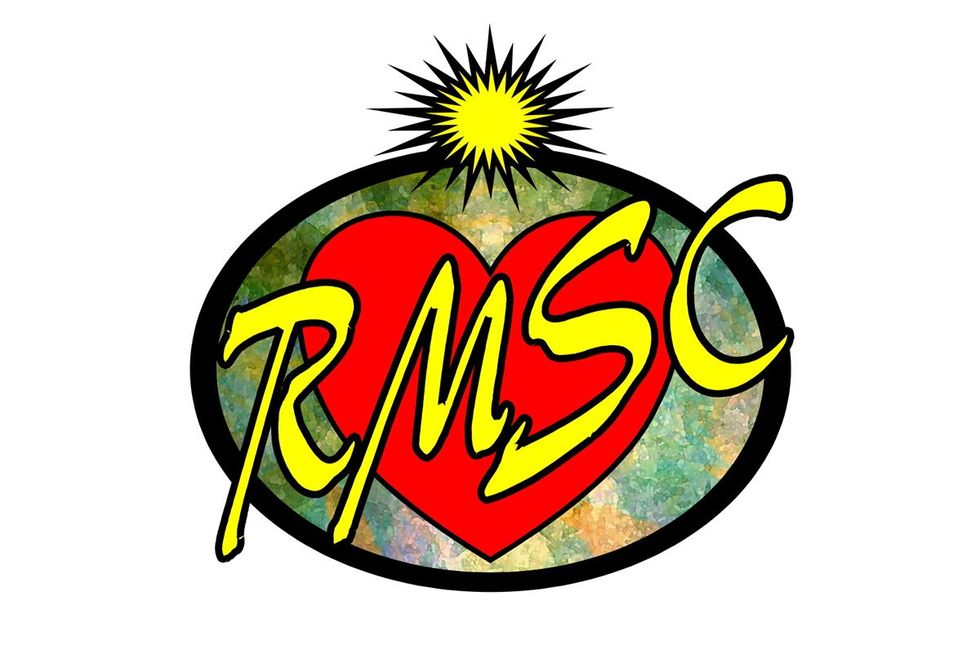 Brought To You By Rocky Mountain Slides www.premierguitar.com
Brought To You By Rocky Mountain Slides www.premierguitar.com
Line 6 Debuts Powercab CL Multi-Voice Guitar Speaker Systems for Amp Modelers
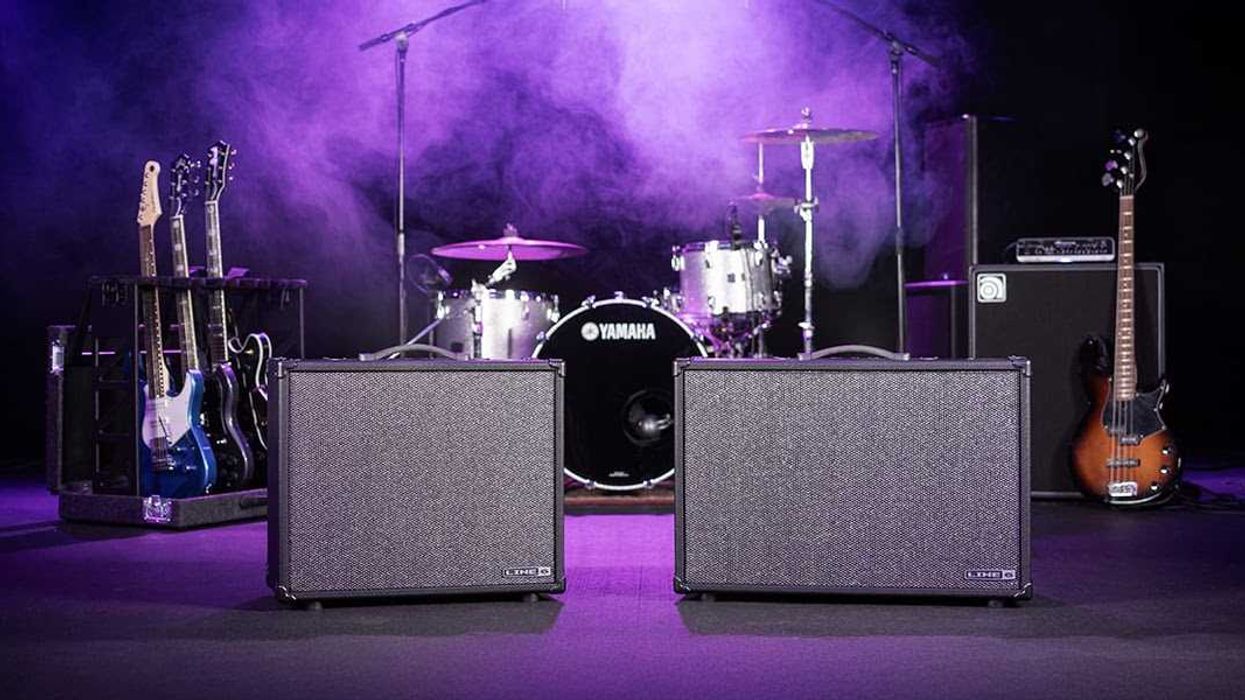
Line 6, Inc. has introduced the Powercab® CL family of open-back multi-voice active guitar speaker systems designed to provide exceptional amplification for all modelers and even compact amp-simulation pedals.
“Both the Powercab CL 212 and Powercab CL 112 are perfect for practice and live performance,” said Rick Gagliano, Senior Director of Products. “Unlike FRFR cabs, they are loaded with custom-designed guitar speakers, providing a playing experience more like plugging into a guitar amplifier with a traditional open-back cabinet.”
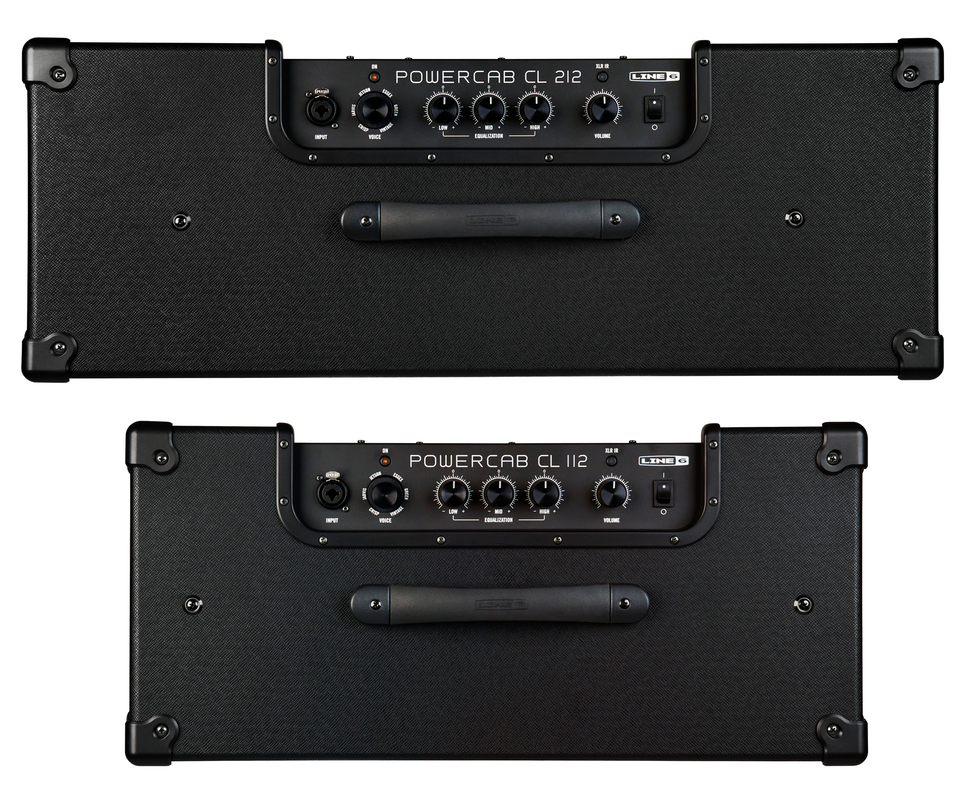
The 200-watt Powercab CL 212 boasts dual 12" speakers, while the 100-watt Powercab CL 112 has a single 12" speaker. These lightweight open-back cabinets feature simple, straightforward controls—including a 3-band room EQ with Low, Mid, and High boost/cut. MIDI control and USB connectivity are also supported. Powercab CL cabs operate in either of two modes:
In Speaker Voicing mode, you can select Speaker Voicings that interact with the internal speakers to make them sound and respond more like one of six legendary speakers. In Power Amp In mode, they function as high-quality powered guitar cabs; In either mode, disable your modeler’s cab block and simply plug in and play.
While in either mode, you can insert a speaker IR into the XLR Out signal, creating an independent virtual cab when routing it to a front-of-house mixer or an audio interface. Six Factory IRs are included, and you can also load your own IRs using the free Powercab CL IR Loader application, select the default/neutral speaker IR, or bypass the IR on the XLR output.
No matter how you use them, Powercab CL speaker systems deliver consistent tone and feel at any volume.
Pricing & Availability
Powercab CL 212 is $549.99 USD (MSRP) and Powercab CL 112 is $449.99 USD (MSRP). Both are available worldwide.
OC Pedal Co. LA HABRA Hard Clipper Review
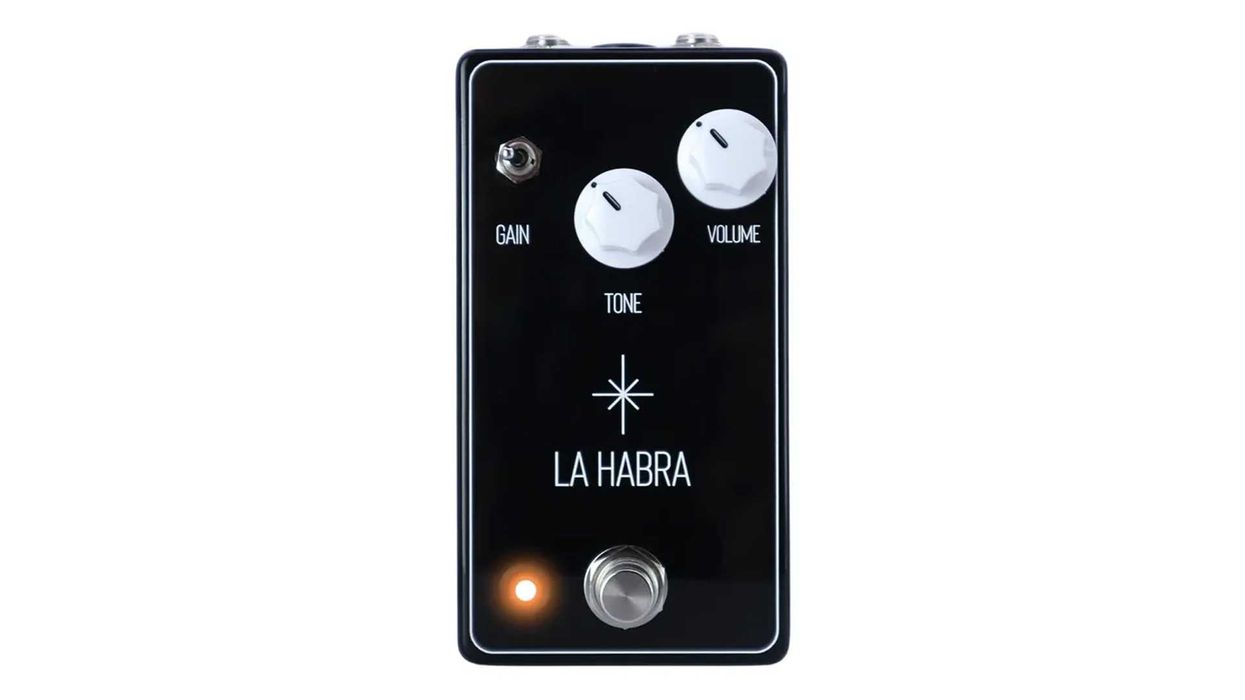
OC Pedal Co. was formed in 2024 by Santa Ana native Evan Haymond, a session ace who toured with Jack Russell of Great White in the 2010s. Not surprisingly, OC Pedal Co.’s U.S.A.-made LA HABRA Hard Clipper evokes many of the crunchy sounds from that era.
Less is More
The LA HABRA’s control panel is minimal, with just two knobs—volume and tone. There’s no gain knob, instead you get a gain switch that lets you choose between two clipping profiles. In the right position the pedal employs op-amp clipping. Set it to the left and a set of LED diodes are activated. With humbuckers, the gain switch set to LED mode, and the tone knob at 11:00, the LA HABRA produced a toothy sound that, sure enough, produced power chord sounds that sounded more than a little like Great White’s cover of “Once Bitten, Twice Shy.”
Though the lack of a gain knob may leave some players feeling limited, the tone knob is a powerful tool for shaping the characteristics of the distortion, and with the tone knob at its darkest setting, the LA HABRA still delivers ample definition. Move the tone knob up to around 3:00, though, and there’s enough clarity and treble detail to make leads sizzle. To my ears this is where the pedal shines, and bumping the tone knob all the way up (with the gain switch still set to the LED clipping mode), the sound is super aggressive without being over-saturated.
In general, with the gain switch set to LED clipping you get a high-end boost and hear and feel more compression. Op-amp clipping tames some of the highs yielding a more balanced output, which is particularly noticeable when the tone knob is set to 3:00 and above. I generally preferred the gain switch set to op-amp clipping but each clipping mode yields sounds that can work in many contexts.
The Verdict
The LA HABRA has plenty of definition for melodic parts and is tough enough for bluesy riffs. For legato shred-type playing, there were times when I wished the pedal had a little more gain. But LA HABRA has a knack for feeling amp-like, particularly in terms of dynamics and touch sensitivity—much more so than many pedals that occupy this mid- to high-mid-gain category.
Rudolf Schenker reveals the “one favour” Uli Jon Roth agreed to before his Scorpions departure

Rudolf Schenker asked Uli Jon Roth to agree to one last favour before he left Scorpions to pursue a project of his own.
Things were looking good for the band at the time of Roth’s departure, with them having released a number of successful albums including Fly To The Rainbow and In Trance, and their international fan base was growing. However, Schenker says Roth’s unhappiness became fairly obvious to him as time went on.
Speaking to Get On The Bus, Schenker recalls how Roth informed him of his decision to quit: “One day in the morning, on Sunday, he came. Uli Jon Roth came to me. I was living in a normal apartment in Hanover. And [he] said, ‘Rudolf, can I talk to you?’ I said, ‘Sure. Come in, come in.’ So [he said], ‘Rudolf, I want to quit.’”
He continues, “I said, ‘Yeah.’ [Roth replied,] ‘You don’t say anything more?’ I said, ‘No, because I was watching you. I could see that you, sooner or later, will move to your own project.’”
The project that Roth went on to pursue was his band Electric Sun, which formed in 1978. They went on to release three albums together, with their first being 1979’s Earthquake. But, before his exit was made final, Schenker wanted just one more thing from Roth.
“‘Do this Tokyo Tapes [live] album with us as a last piece, as a Last Testament for the Scorpions,’” he asked him. “We went to Japan. We played the Tokyo Tapes album. And then, Uli left.”
Interestingly, despite Roth’s time in Scorpions leading to him being cited as an inspiration for many great metal guitarists, Roth has said he doesn’t consider himself a metal fan.
“I’m not a metal guy,” he told the Scars and Guitars podcast back in August. “When I was in the Scorpions and the name heavy metal barely existed, we were considered, if you want to classify it, as a melodic hard rock band.
“So, metal, the name, came afterwards, and then it became something which is actually not my cup of tea. Most metal, for me, is just a little bit too hardcore, a little bit too distorted, and, for me, maybe a bit two-dimensional. And what I mean by that is the lack of dynamics.”
The post Rudolf Schenker reveals the “one favour” Uli Jon Roth agreed to before his Scorpions departure appeared first on Guitar.com | All Things Guitar.
“Alex and I have done some serious soul searching”: The wait is over – Rush are heading on tour in 2026
![[L-R] Geddy Lee and Alex Lifeson of Rush](https://guitar.com/wp-content/uploads/2025/10/Rush-2026@2000x1500.jpg)
In recent years it’s been heavily suggested that Rush was done and dusted, and that surviving members Alex Lifeson and Geddy Lee would never head back out on the road.
Earlier this year, Lifeson said he wasn’t keen on tarnishing Rush’s legacy by reforming, saying: “I’d rather be remembered for that legacy than return as the top Rush tribute band”. “Some days I wake up wanting to go out and tour again and some days I don’t,” he added.
But now, in an announcement set to send Rush fans into overdrive, Lifeson and Lee have announced they are heading out on tour in 2026 – yes, as Rush – with 12 dates in seven cities across the US, Canada and Mexico.
The tour – dubbed Fifty Something – is described as a celebration of 50-plus years of Rush music, and of the legacy of late drummer Neil Peart. It also marks the first time Lee and Lifeson will tour together since the finale of Rush’s R40 tour in 2015 at the Forum in LA. In something of a full circle moment, the Fifty Something tour will kick off at the Forum.
Cities Rush will hit on the tour are: Los Angeles, Mexico City, Fort Worth, Chicago, New York, Toronto and Cleveland.
Filling in on drums will be Anika Nilles, a German drummer, composer and producer who has previously played with Jeff Beck.
“It’s been over 10 years since Alex and I have performed the music of Rush alongside our fallen bandmate and friend Neil,” says Geddy Lee. “A lifetime’s worth of songs that we had put our cumulative hearts and souls into writing, recording and playing together onstage.
“And so, after all that has gone down since that last show, Alex and I have done some serious soul searching and come to the decision that we fucking miss it, and that it’s time for a celebration of 50-something years of Rush music. So in 2026 my BFF Lerxst (aka Alex Lifeson) and I are going to hit the road once again to pay tribute to our past and to Neil by performing a vast selection of Rush songs in a handful of cities. No small task, because as we all know Neil was irreplaceable.”
Of touring drummer Anika Nilles, Geddy Lee goes on: “Life is full of surprises, and we have been introduced to another remarkable person; an incredible drummer and musician who is adding another chapter to our story while continuing her own fascinating musical journey.
“Her name is Anika Nilles, and we could not be more excited to introduce her to our loyal and dedicated Rush fanbase, whom, we know, will give her every chance to live up to that near impossible role. Before we hit the stage, we also hope to add another musician or two to expand our sound a wee bit and free up Alex and I, in order to show off some of our new fancy dance steps.”
“Lerxst, Anika and myself, along with many of our longstanding crew members have been hard at work rehearsing and designing the kind of RUSH show you’ve grown accustomed to expect from us. We dearly hope you will come along and help us celebrate our history together.”
Speaking on the reunion tour, Carrie Nuttall-Peart and Olivia Peart, Neil’s widow and daughter, add: “We are thrilled to support the Fifty Something tour, celebrating a band whose music has resonated and inspired fans for generations, and to honour Neil’s extraordinary legacy as both a drummer and lyricist.
“Neil’s musicianship was singular. Compositions of intricacy and power that expanded what rhythm itself could express. As both a drummer and lyricist, he was irreplaceable…”
They conclude: “As the band enters this new chapter, it promises to be truly unforgettable. We are excited to see how their new vision unfolds, and to hear this legendary music played live once again.”
View a full list of dates on the Fifty Something tour below:
- Sun Jun 07 Los Angeles, CA Kia Forum
- Tue Jun 09 Los Angeles, CA Kia Forum
- Thu Jun 18 Mexico City, MX Palacio de los Deportes
- Wed Jun 24 Fort Worth, TX Dickies Arena
- Fri Jun 26 Fort Worth, TX Dickies Arena
- Thu Jul 16 Chicago, IL United Center
- Sat Jul 18 Chicago, IL United Center
- Tue Jul 28 New York, NY Madison Square Garden
- Thu Jul 30 New York, NY Madison Square Garden
- Fri Aug 07 Toronto, ON Scotiabank Arena
- Sun Aug 09 Toronto, ON Scotiabank Arena
- Thu Sep 17 Cleveland, OH Rocket Arena
Learn more at Rush’s official website.
The post “Alex and I have done some serious soul searching”: The wait is over – Rush are heading on tour in 2026 appeared first on Guitar.com | All Things Guitar.
Mod Garage Guitar Makeover: Neck-Pocket Cleanup and DIY Routing
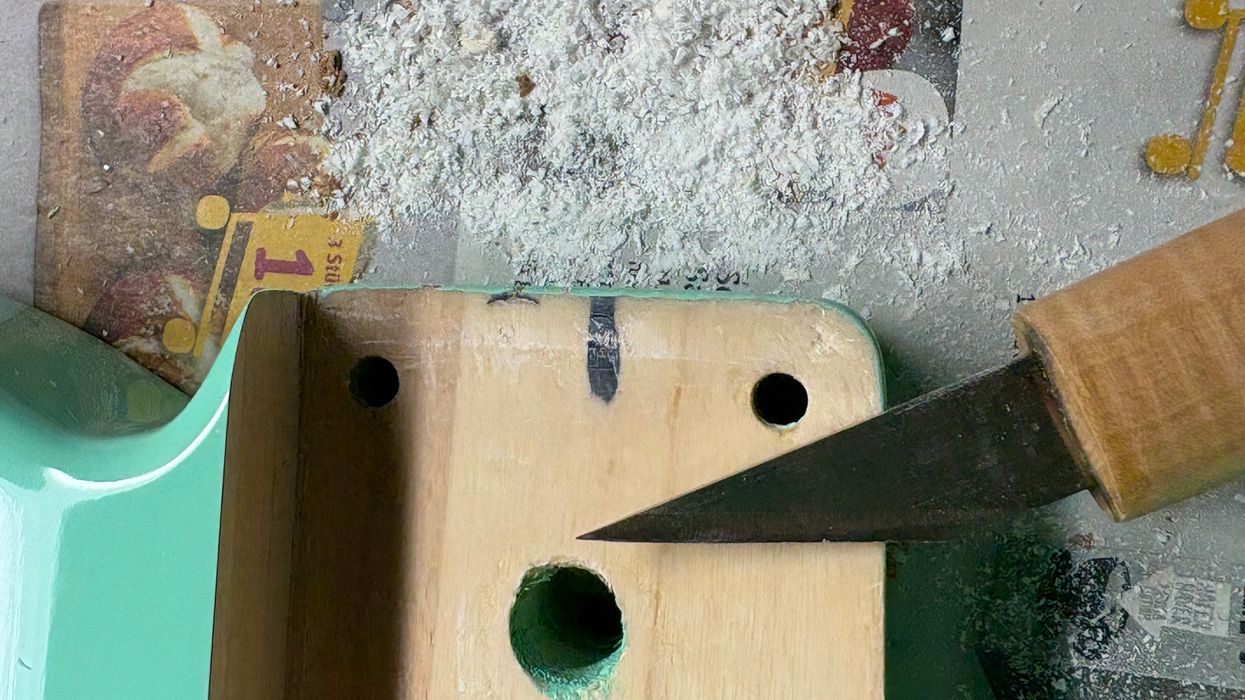
Hello, and welcome back to Mod Garage! Let’s pick up where we left off with our Telecaster.
Our next step will be to take care of the neck pocket, which is a very important and crucial task. This is the contact point of the body and the neck, so we want a tight, precise connection for maximum tuning stability and playing comfort.
I don’t know if it’s the same on all Harley Benton T-styles, but the fitting accuracy of the Harley Benton’s neck and neck pocket is perfect—I wish I saw this kind of quality on guitars which cost more than 10 times the price of this one! No need to modify our neck pocket by gluing in some wooden veneer to make it tighter; we can leave it just the way it is.
While the fitting is commendable, unfortunately the craftsmanship of the neck pocket itself is not that good. Besides wooden debris and chips, there’s a lot of “stuff” inside that I can’t identify for certain, but it’s likely some grain filler and clear coat. We’ll need to remove a fair amount from the neck pocket to ensure the heel of the neck has a completely level surface for installation.
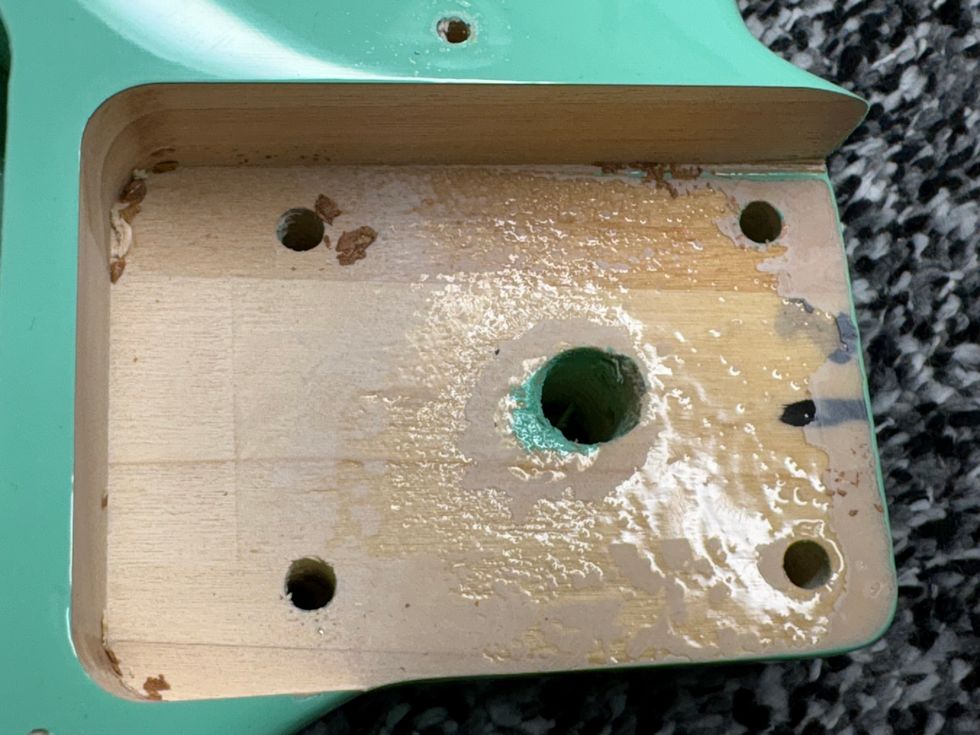
I decided to use a simple razor blade, a Japanese carving knife, and a razor knife to scrape all the junk away. You can also use some micro chisels, or even simply sanding paper. Special knives that are used for guitar lutherie as well as violin-making are ultra-sharp, and with some practice, it’s easy and fast to use them for such tasks. I was surprised by how much material there was in the neck pocket; it had a strong chemical smell to it, so it went immediately into the garbage.
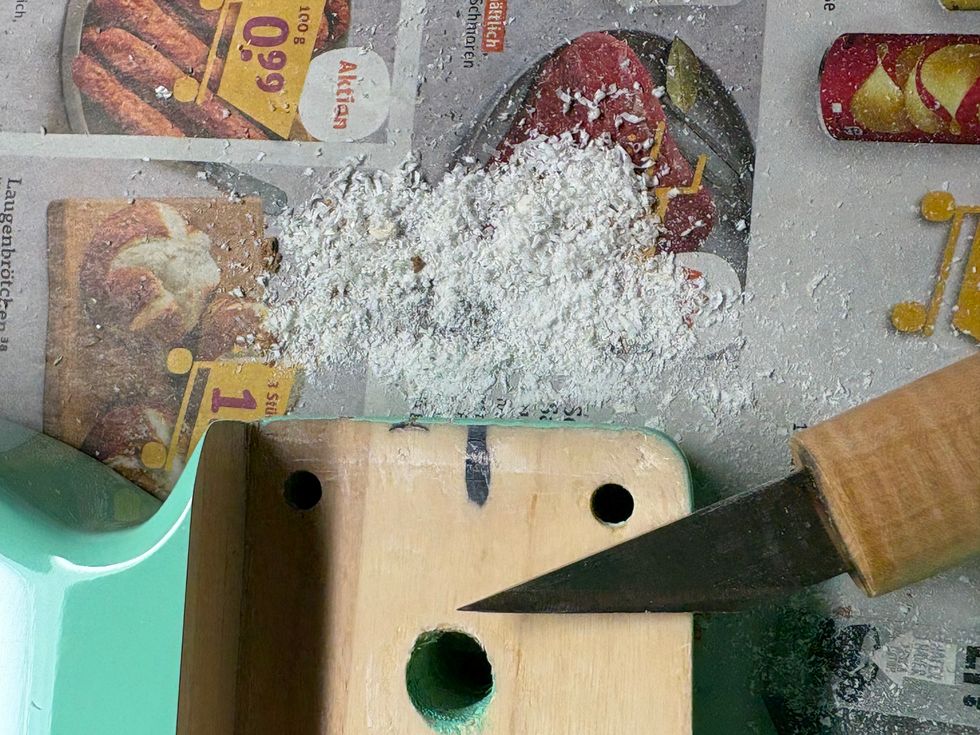
Next, I took some sandpaper of different grits to make the surface as smooth as possible. I started with 150-grit and worked my way up to 1000-grit. After blowing away all dust, the neck pocket was absolutely even and clean, offering the perfect surface for the neck heel. Pleased with the result, I moved on to the next task.
For some reason, there was a big hole in the neck pocket, which I think has something to do with the CNC routing or the painting process. While this hole is not a problem regarding stability, and it’s invisible after the neck is installed, it’s not in the original Fender design, and my inner monk can’t live with this, so it had to be closed with a wooden dowel. After measuring, it turned out to be a metric 10 mm hole, and I knew luck was on my side—as is often the case, IKEA would be my best friend. You’re probably familiar with the bevelled wooden dowels used on almost every IKEA product to attach two parts together. They’re made out of strong beech wood and available as individual spare parts with an 8 or 10 mm diameter, so I always have a good collection in the shop. This was easy going: I simply cut the dowel to length and put it in a cup of warm water for a couple minutes so it expanded a little bit for a tight fit. After drying it for a short time, I put some wood glue on it, plus some in the hole, before pushing it in and wiping away the excess glue with a damp cloth.
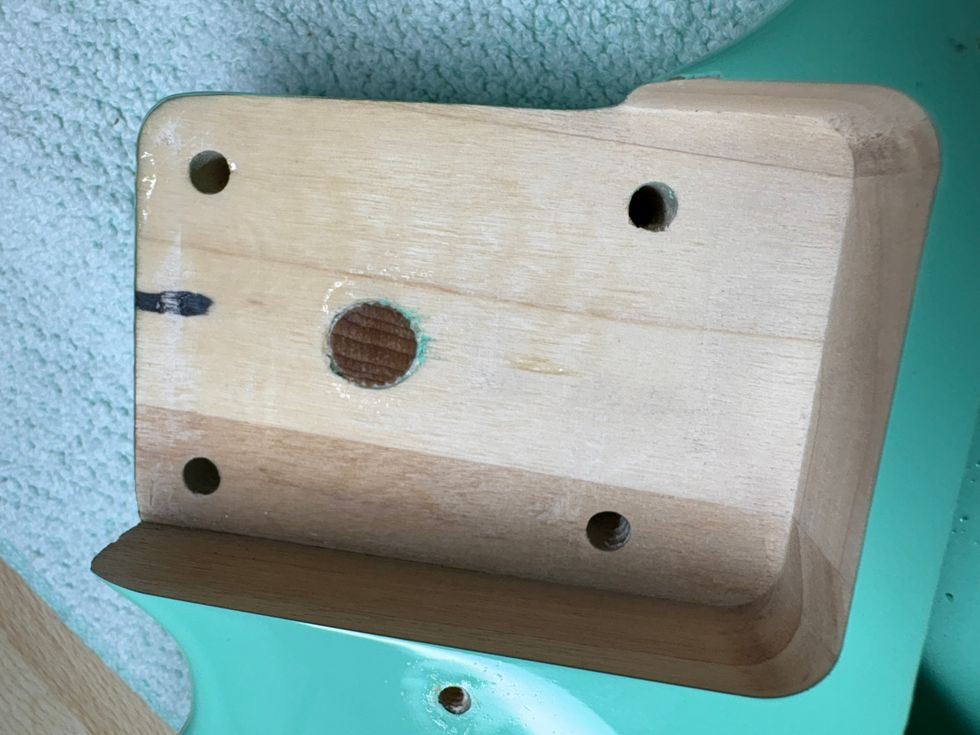
A tip from the shop: Ask your local optical store what they are doing with the old lenses from their customers. If there’s a chance you can get some for free, this is the perfect helper for any glue job—I always have a good collection of such lenses in the shop, and they’re easy to clean with a bit of rubbing alcohol. Put the wood glue on the concave side of the lens and use a toothpick to apply the glue to the dowel and hole. Afterwards, wipe the rest of the glue away, clean the lens with water, and it’s ready for the next time. This also works for super glue, but you’ll have to throw away the lens afterwards.
Here, we can clearly see how many different pieces of wood are glued together for the body (I count four pieces alone in the small neck pocket), that the body is laminated horizontally, and the thickness of the paint.
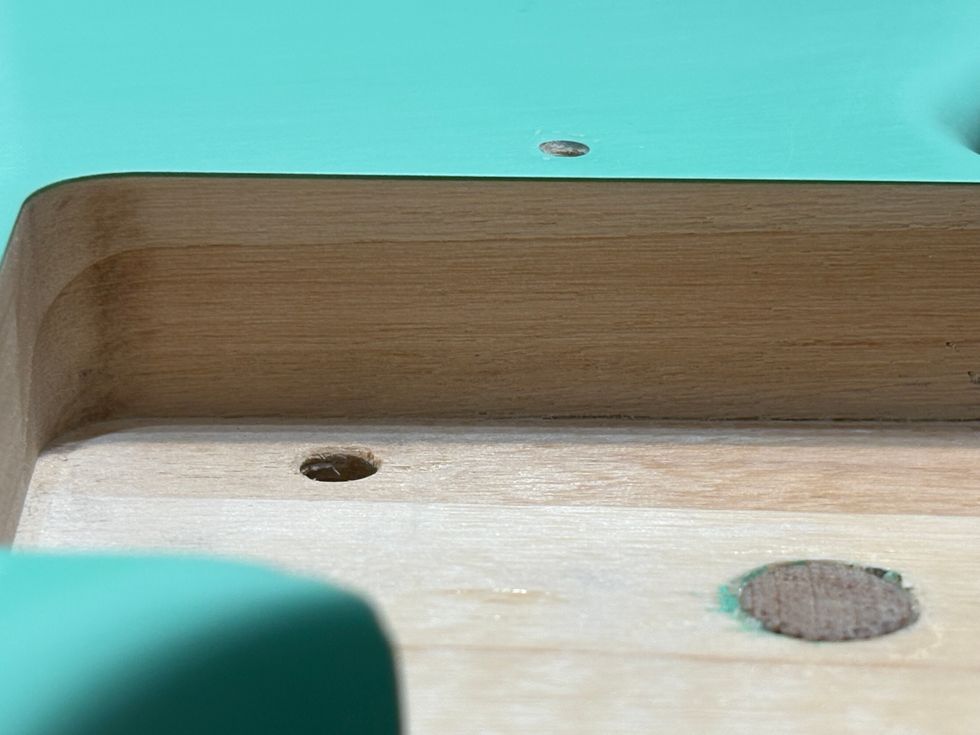
As you can see, the routings for the bridge pickup and the electronics are a little bit strange. The bridge pickup’s cavity is relatively shallow, and a Forstner drill bit was used to create deeper spots for the three screws holding the pickup in place. At the bottom of the electronics compartment is a block of wood, which I’d guess was there to shorten routing time and reduce production costs. I still haven’t decided on the pickups and electronics I’ll use for this guitar, but I certainly don’t want to run into any trouble making them fit. The wooden obstruction here could limit what sorts of pots and pickup-selected switches we can use, so it’s best to get ahead of that and remove it from the equation. (Even if it doesn’t end up being 100 percent necessary, it’ll remove a bit of excess weight!) So, let’s carve out some space here.
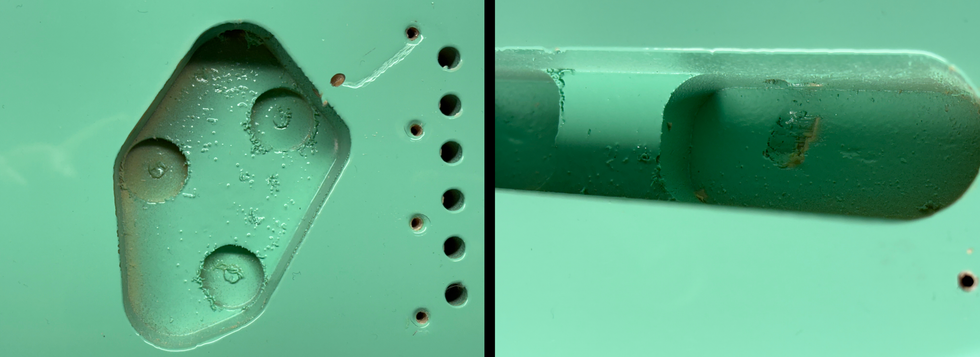
The professional way would be to mask the whole body with tape and use a handheld router to remove the wood. Since I bet most of you don’t have that sort of tool, we’ll do it the old-fashioned way, using a Forstner drill bit and a drill press. I don’t recommend any handheld drilling device for this—if you don’t have access to a drill press or a handheld router, ask your local carpenter if he can do the work for you. After masking the body, the drilling process is easy to do with a sharp Forstner bit. I used a smaller one for the edges and a bigger one for the rest.
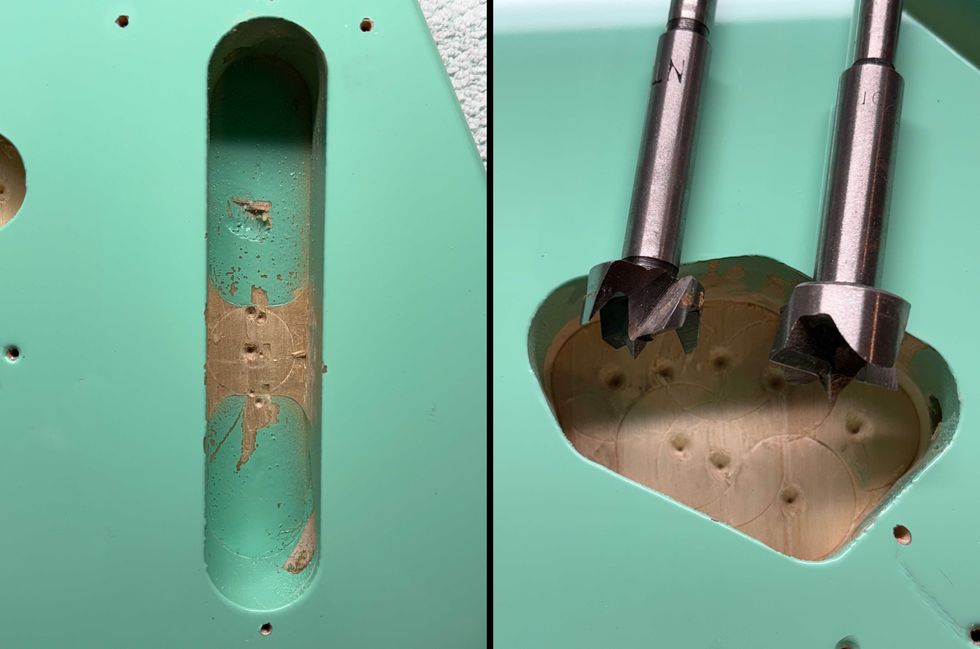
It’s a crude but effective—and fast—way to remove the wood. After the drilling, I used some sandpaper to smooth out the surface and put some shellac on the bare wood, but this isn’t mandatory—my inner monk, you know? Take care to not drill too deep, which happened to me years ago on a custom-made Jaguar body with a very special paintjob. That wasn’t fun to explain to the customer.
Next month, we’ll finish the work on the body, before moving on to the hardware and electronics. The good news is that our $340 budget is still in hand for future investments, so stay tuned.
Mod Garage Guitar Makeover: Neck-Pocket Cleanup and DIY Routing

Hello, and welcome back to Mod Garage! Let’s pick up where we left off with our Telecaster.
Our next step will be to take care of the neck pocket, which is a very important and crucial task. This is the contact point of the body and the neck, so we want a tight, precise connection for maximum tuning stability and playing comfort.
I don’t know if it’s the same on all Harley Benton T-styles, but the fitting accuracy of the Harley Benton’s neck and neck pocket is perfect—I wish I saw this kind of quality on guitars which cost more than 10 times the price of this one! No need to modify our neck pocket by gluing in some wooden veneer to make it tighter; we can leave it just the way it is.
While the fitting is commendable, unfortunately the craftsmanship of the neck pocket itself is not that good. Besides wooden debris and chips, there’s a lot of “stuff” inside that I can’t identify for certain, but it’s likely some grain filler and clear coat. We’ll need to remove a fair amount from the neck pocket to ensure the heel of the neck has a completely level surface for installation.

I decided to use a simple razor blade, a Japanese carving knife, and a razor knife to scrape all the junk away. You can also use some micro chisels, or even simply sanding paper. Special knives that are used for guitar lutherie as well as violin-making are ultra-sharp, and with some practice, it’s easy and fast to use them for such tasks. I was surprised by how much material there was in the neck pocket; it had a strong chemical smell to it, so it went immediately into the garbage.

Next, I took some sandpaper of different grits to make the surface as smooth as possible. I started with 150-grit and worked my way up to 1000-grit. After blowing away all dust, the neck pocket was absolutely even and clean, offering the perfect surface for the neck heel. Pleased with the result, I moved on to the next task.
For some reason, there was a big hole in the neck pocket, which I think has something to do with the CNC routing or the painting process. While this hole is not a problem regarding stability, and it’s invisible after the neck is installed, it’s not in the original Fender design, and my inner monk can’t live with this, so it had to be closed with a wooden dowel. After measuring, it turned out to be a metric 10 mm hole, and I knew luck was on my side—as is often the case, IKEA would be my best friend. You’re probably familiar with the bevelled wooden dowels used on almost every IKEA product to attach two parts together. They’re made out of strong beech wood and available as individual spare parts with an 8 or 10 mm diameter, so I always have a good collection in the shop. This was easy going: I simply cut the dowel to length and put it in a cup of warm water for a couple minutes so it expanded a little bit for a tight fit. After drying it for a short time, I put some wood glue on it, plus some in the hole, before pushing it in and wiping away the excess glue with a damp cloth.

A tip from the shop: Ask your local optical store what they are doing with the old lenses from their customers. If there’s a chance you can get some for free, this is the perfect helper for any glue job—I always have a good collection of such lenses in the shop, and they’re easy to clean with a bit of rubbing alcohol. Put the wood glue on the concave side of the lens and use a toothpick to apply the glue to the dowel and hole. Afterwards, wipe the rest of the glue away, clean the lens with water, and it’s ready for the next time. This also works for super glue, but you’ll have to throw away the lens afterwards.
Here, we can clearly see how many different pieces of wood are glued together for the body (I count four pieces alone in the small neck pocket), that the body is laminated horizontally, and the thickness of the paint.

As you can see, the routings for the bridge pickup and the electronics are a little bit strange. The bridge pickup’s cavity is relatively shallow, and a Forstner drill bit was used to create deeper spots for the three screws holding the pickup in place. At the bottom of the electronics compartment is a block of wood, which I’d guess was there to shorten routing time and reduce production costs. I still haven’t decided on the pickups and electronics I’ll use for this guitar, but I certainly don’t want to run into any trouble making them fit. The wooden obstruction here could limit what sorts of pots and pickup-selected switches we can use, so it’s best to get ahead of that and remove it from the equation. (Even if it doesn’t end up being 100 percent necessary, it’ll remove a bit of excess weight!) So, let’s carve out some space here.

The professional way would be to mask the whole body with tape and use a handheld router to remove the wood. Since I bet most of you don’t have that sort of tool, we’ll do it the old-fashioned way, using a Forstner drill bit and a drill press. I don’t recommend any handheld drilling device for this—if you don’t have access to a drill press or a handheld router, ask your local carpenter if he can do the work for you. After masking the body, the drilling process is easy to do with a sharp Forstner bit. I used a smaller one for the edges and a bigger one for the rest.

It’s a crude but effective—and fast—way to remove the wood. After the drilling, I used some sandpaper to smooth out the surface and put some shellac on the bare wood, but this isn’t mandatory—my inner monk, you know? Take care to not drill too deep, which happened to me years ago on a custom-made Jaguar body with a very special paintjob. That wasn’t fun to explain to the customer.
Next month, we’ll finish the work on the body, before moving on to the hardware and electronics. The good news is that our $340 budget is still in hand for future investments, so stay tuned.
Rush Announce 2026 Reunion Tour

Rock and Roll Hall of Fame® Inductees, GRAMMY® Award-nominated icons, and RUSH Co-Founders Geddy Lee [bass, keys, vocals] and Alex Lifeson [guitar, vocals] have announced their return to the stage for a very special 2026 headline tour, Fifty Something, in celebration of RUSH’s music, legacy, and the life of late drummer and lyricist Neil Peart. It notably marks the first time Lee and Lifeson have toured together in eleven years since the finale of RUSH’s R40 Tour on August 1, 2015 at the Forum in Los Angeles, CA, bringing it full circle with a return to the Forum to embark upon these special shows.Of the tour, Geddy Lee says:
“It’s been over 10 years since Alex and I have performed the music of RUSH alongside our fallen bandmate and friend Neil. A lifetime’s worth of songs that we had put our cumulative hearts and souls into writing, recording and playing together onstage. And so, after all that has gone down since that last show, Alex and I have done some serious soul searching and come to the decision that we fucking miss it, and that it’s time for a celebration of 50-something years of RUSH music. So in 2026, my BFF Lerxst (aka Alex Lifeson) and I are going to hit the road once again to pay tribute to our past and to Neil by performing a vast selection of RUSH songs in a handful of cities. No small task, because as we all know Neil was irreplaceable.
Yet life is full of surprises, and we have been introduced to another remarkable person; an incredible drummer and musician who is adding another chapter to our story while continuing her own fascinating musical journey. Her name is Anika Nilles, and we could not be more excited to introduce her to our loyal and dedicated RUSH fanbase, whom, we know, will give her every chance to live up to that near impossible role. Before we hit the stage, we also hope to add another musician or two to expand our sound a wee bit and free up Alex and I, in order to show off some of our new fancy dance steps.
Lerxst, Anika and myself, along with many of our longstanding crew members have been hard at work rehearsing and designing the kind of RUSH show you’ve grown accustomed to expect from us. We dearly hope you will come along and help us celebrate our history together.”
Carrie Nuttall-Peart and Olivia Peart, Neil’s widow and daughter share:
“We are thrilled to support the Fifty Something tour, celebrating a band whose music has resonated and inspired fans for generations, and to honor Neil’s extraordinary legacy as both a drummer and lyricist.
Neil’s musicianship was singular. Compositions of intricacy and power that expanded what rhythm itself could express. As both drummer and lyricist, he was irreplaceable. Inimitable in his artistry, and unmatched in the depth and imagination he brought to the lyrics that inspired and moved so many, he profoundly shaped how fans connected with him and the band, giving voice and meaning to their own lives.
As the band enters this new chapter, it promises to be truly unforgettable. We are excited to see how their new vision unfolds, and to hear this legendary music played live once again.”
Earlier today, fans got the news via a Rush newsletter from a home video that announced the celebration of upcoming dates with Geddy Lee and Alex Lifeson at Geddy Lee’s home studio. Watch here.Last night the band celebrated in a private event at the Rock & Roll Hall of Fame in Cleveland with this on-stage interview and Q&A. Watch full clip here.RUSH will perform multiple shows in 7 cities across Canada, the United States and Mexico, beginning June 7, 2026 at The Kia Forum in Los Angeles. These special “evening with” shows will find the band playing two sets each night. Each show will feature a distinct selection of songs and RUSH will build each night’s setlist from a catalogue of 35 songs including their greatest hits and fan favorites.
For Fifty Something, Lee and Lifeson will be accompanied by German drummer, composer, and producer Anika Nilles, who has performed as Jeff Beck’s drummer for over 60 shows and has released four solo albums.
Fans will be able to participate in the RUSH Artist Presale by signing up at https://livemu.sc/rush by Thursday, October 9 at 11:59pm ET.
Artist Presales for this tour are hosted by multiple ticketing sites but anyone who signs up can join the sale. For Artist Presales on Ticketmaster, no code is needed – access is tied to your account. The Artist Presale on SeatGeek for Cleveland will require a code. The Artist Presale begins on Monday, October 13 at 12PM local time in the US and Canada and Thursday, October 16 at 12PM local time in Mexico. General onsale begins here on Friday, October 17th at 12pm local time for the US & Canada, and 11am local time for Mexico.
Additionally, these pre-sales will be available:
- Citi for US shows: Citi is the official card of the RUSH 2026 tour. Citi cardmembers will have access to presale tickets in the US beginning Friday, October 10 at 12pm local time until Sunday, October 12 at 11:59pm local time through the Citi Entertainment program. For complete presale details visit www.citientertainment.com.
- American Express for Canada: American Express® Card Members can purchase tickets for the Toronto show before the general public beginning Friday, October 10 at 12pm local time through Sunday, October 12 at 11:59pm local time.
- Banamex for Mexico City: Banamex cardholders will have presale access ahead of the general onsale. Times vary based on Banamex card type, see list below for more details.
- (BEYOND BANAMEX): Presale available Monday, 10/13 9:00 AM local to 11:59 PM local
- (ELITE BANAMEX): Presale available Tuesday, 10/14 9:00 local to 11:59 PM local
- (ALL CARDS): Presale available Wednesday, 10/15 11 AM local to 11:59 PM local
Rush invites fans to get closer than ever with three elevated offerings: an all-new VIP program, the first-ever 2112 Platform Experience, and curated Travel Packages for fans making a trip to see the show.
For VIP: http://wearesuper.co/rushvip
For Travel: http://wearesuper.co/rushtravel
TOUR DATES
Sun Jun 07 Los Angeles, CA Kia ForumTue Jun 09 Los Angeles, CA Kia Forum
Thu Jun 18 Mexico City, MX. Palacio de los Deportes
Wed Jun 24 Fort Worth, TX Dickies Arena
Fri Jun 26 Fort Worth, TX Dickies Arena
Thu Jul 16 Chicago, IL United Center
Sat Jul 18 Chicago, IL United Center
Tue Jul 28 New York, NY Madison Square Garden
Thu Jul 30 New York, NY Madison Square Garden
Fri Aug 07 Toronto, ON Scotiabank Arena
Sun Aug 09 Toronto, ON Scotiabank Arena
Thu Sep 17 Cleveland, OH Rocket Arena
Additionally, RUSH just revealed the 50-track super deluxe anthology, RUSH 50, that Rolling Stone called “an epic saga, that functions equally well as an introduction for the uninitiated or a companion piece for the super fan.” RUSH 50 is available in five distinct configurations, including the (1) Super Deluxe Edition, (2) RUSH Store Exclusive Super Deluxe Edition, (3) 7-LP Deluxe Edition, (4) 4-CD Deluxe Edition, and (5) Digital Edition. It represents breadth of their discography, beginning with the first-ever reissue of their 1973 debut single and concluding with a live recording the final song Lee, Lifeson, and Peart played together during the R40 Tour closer at The Forum. Purchase HERE.
Get ready to celebrate the music of RUSH with Lee and Lifeson live in 2026!
“I’d be like, I have to say a couple of prayers to John Paul II, Mother Teresa, and the big guy”: Zakk Wylde was scared Ozzy Osbourne wouldn’t get through Black Sabbath’s final concert

Zakk Wylde has been reflecting on the final Black Sabbath show that took place in July, and has shared his awe at how Ozzy Osbourne managed to pull through despite his health struggles.
The band’s final gig took place at Villa Park in Birmingham, UK earlier this summer, and formed part of one giant celebration of all things metal, all while raising money for charity. Osbourne sadly passed away just a matter of weeks later, and his loss was felt deeply across the world by both fans and fellow artists.
Wylde, who joined Osbourne’s solo band in 1987, previously shared how challenging the final gig was to pull off. While his main concern was ensuring that Osbourne himself was doing okay, he also said that pretty much everything was pulled off on the fly.
Further looking back at the big day and his time spent playing for Osbourne in a new interview with Rock Feed, Wylde says the Prince of Darkness somehow always managed to tough out his shows.
“[With] Ozz, you’re talking about fortitude and persistence and just refusing… I mean, I even wrote to him after the show. I was like, ‘Ozz, so proud of you, man.’ He never quit. Like, never quit. I can’t tell you how many times his voice would be banged up,” he explains (via Ultimate Guitar).
“I’d be like, ‘I have to say a couple of prayers to John Paul II, Mother Teresa, and the big guy’, several times during the show… But he’d always end up pulling through these gigs. I mean, I’d always stare at him in amazement and just go, ‘That’s my hero, man,’ all the time.”
Another player who has since looked back on their last interaction with Osbourne is Nuno Bettencourt. Though now known for his stellar guitar work in Extreme, Bettencourt was offered a job with Osbourne in the 1990s, but turned it down as he was busy with his own band. He’d also previously auditioned to play for him as a teenager, but didn’t get selected.
“The last words we said to each other when we took the big group photo, I grabbed his hand, saying, ‘Thank you for everything, and thank you, Ozzy, for what you mean to me,’” Bettencourt told Page Six at the VMAs.
“He pulls me in by the hand. He goes, ‘You were the only guitar player who said no to me.’ But he laughed! He goes, ‘I love you and thank you for being here.’”
The post “I’d be like, I have to say a couple of prayers to John Paul II, Mother Teresa, and the big guy”: Zakk Wylde was scared Ozzy Osbourne wouldn’t get through Black Sabbath’s final concert appeared first on Guitar.com | All Things Guitar.
“His playing transcends decades – I could never really capture the essence of him”: Former Guns N’ Roses guitarist Buckethead on the genius of Slash

Buckethead has responded to a complimentary Facebook post by Slash commending his guitar skills.
Buckethead – real name Brian Patrick Carroll – played with Guns N’ Roses between 2000 and 2004 following Slash’s departure, and appeared on the band’s long-delayed 2008 album Chinese Democracy.
Reposting a video of Buckethead jamming with Primus’s Les Claypool on his social media, Slash wrote last week: “This is some of the funkiest music you’ll ever hear! Buckethead and Les Claypool of Primus creating pure magic together. The bass lines are absolutely insane and Buckethead’s guitar work is next level as always.
“If you love funk, progressive rock, or just incredible musicianship, this jam will blow your mind! Both legends pushing each other to new heights. Support Buckethead whenever you can!”
To repay the favour, Buckethead has made a social media post of his own waxing lyrical about the genius of Slash’s playing.
“Just wanted to say that Slash is one of the greats of all time, as everyone knows” he writes. “He was involved in writing music and his playing transcends decades and to reach such a wide amount of people playing really incredible guitar is such a rare thing.
“In the time I was involved in attempting to play his parts, never really could I have captured the essence of him. So much of who he is comes from his playing. I’ll always be in awe of how great he is.”
#buckethead responds to Slash reposting footage of him on instagram
Posted by Buckethead on Thursday, October 2, 2025
Though Buckethead possesses otherworldly guitar talents – which match his similarly extraterrestrial aesthetic – it’s not all that surprising he found it hard to emulate Slash’s guitar playing, given their respective backgrounds. Slash’s musical identity is rooted in the rock ‘n’ roll excess of the ‘80s, while Buckethead is widely praised for his head-spinning shred capabilities, which he does while wearing a family-sized KFC bucket on his head.
The post “His playing transcends decades – I could never really capture the essence of him”: Former Guns N’ Roses guitarist Buckethead on the genius of Slash appeared first on Guitar.com | All Things Guitar.
“It’s really important for guitarists to have something identifiable about the way they sound. In 2025 that’s getting lost”: Where can’t amp modellers compete with physical pedalboards? UK math rock guitarist weighs in
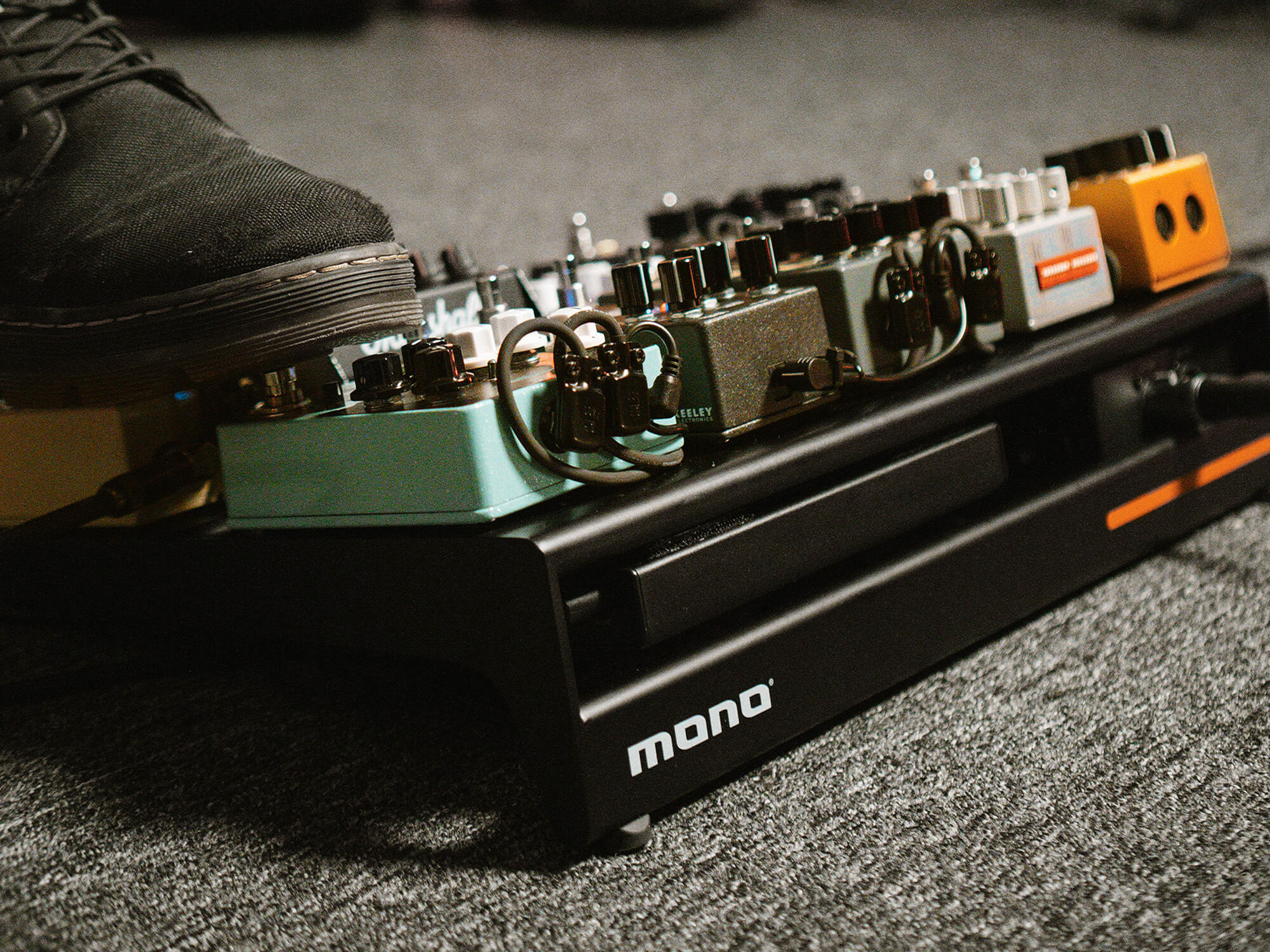
Floorboard amp modellers have sure made touring easier for a growing number of artists, but are they impacting our identities as players?
The small yet mighty power of gear like the Neural DSP Quad Cortex means bands no longer need to transport heavy and somewhat fragile gear across borders, but can rather chuck all the tones they need quite literally into a backpack. But without physical pedals and real life amplifiers, some artists are concerned that sonic identity and uniqueness could slowly fade away.
This is a concern recently raised by Tom Peters of UK-based math rock band, Alpha Male Tea Party. In an interview with Guitar World, Peters likens the modeller’s impact on the creation and performance of music to Spotify’s vast effect on how we listen to it.
“Why do I insist on a massive physical board when modellers exist? Well, one, I’m quite stubborn; and two, I feel it’s really, really really important for musicians in bands to have something identifiable about the way they sound and what they do. And in 2025 that’s getting lost,” he explains.
“The heart of my board is the Boss ES-8 switching system. I used to hate doing all the tap dancing, so I’ve got a bunch of pedals set up on MIDI – you can look at it and say, ‘This is complex,’ but anyone with a Quad Cortex or your basic laptop freebie has more options in the box than I do on my board.
“For me, modellers are a bit like Spotify. I don’t connect with music in the same way I did when I went to a store to buy a CD. Back then I’d wilfully choose to buy something and add it to my collection. Spotify gives you all the music in the world, ever. People listen to it and go, ‘That’s a great record’ – and then move on to another one. Within two weeks of an album cycle people have moved on.”
To clarify, Peters doesn’t judge or shame anyone for using modellers, and notes that they do indeed work very well, “But I don’t think I’d ever get that excited about having a box that has literally every single tone in it, because I haven’t worked to get them,” he continues.
“Another thing we’re losing now is our interaction with tactile processes, and that’s so important to me. I don’t really like looking at menus. It’s just tedious: these dead-end neural pathways. A lot of it is about the response of it when I’m playing. People talk about convenience, but I don’t want to feel comfortable all the time. Convenience isn’t helpful to creativity; it’s a slightly inverse relationship.”
Artists who have used modellers on the road include Metallica, Foo Fighters’ Chris Shiflett, and Slipknot’s Jim Root. Though they proudly sing the praises of such tech, these artists also still argue that their love of traditional gear has not gone anywhere.
Like it or lump it it’s a market that is only getting bigger, with Line 6 recently launching its monumental Helix Stadium range, offering entirely new modelling technology.
The post “It’s really important for guitarists to have something identifiable about the way they sound. In 2025 that’s getting lost”: Where can’t amp modellers compete with physical pedalboards? UK math rock guitarist weighs in appeared first on Guitar.com | All Things Guitar.
Devin Townsend says metal was “undervalued” by the music industry thanks to “Mötley Crüe and all that s**t”

Devin Townsend has argued that bands like Mötley Crüe were the reason metal never got the credit it deserved in the industry.
In a new interview with D’Addario, Townsend opens up about the philosophies that shaped his music journey, and why he thinks the music business failed to take metal seriously.
The Canadian musician, known for his experimental approach to metal and sound design, says his fascination with music began as a way to express himself safely as a kid: “My fascination with music became more practical than anything else because I could express myself in a way that wasn’t gonna get me in trouble from my parents at least.”
- READ MORE: Devin Townsend says “90 percent” of the job for modern musicians is being a content creator
In particular, his obsession with echo and space began after hearing Judas Priest’s Victim of Changes. “I remember hearing Victim of Changes and KK Downing had the echo on the guitar,” he says. “And the thing I found so compelling about that… is echo made even the most profoundly wrong choices intentional, and it kind of forces the hand of it just by having it insistently repeat. And so Judas Priest, Motorhead, Bon Scott, that sort of era, I just loved it. And then Van Halen.”
Like many young metalheads, Townsend recalls finding belonging through the guitar.
“We’re all in the metal shop and we’d be making whammy bars and everybody passing around tablature for Eruption and everything,” he says. “There was a certain amount of social collateral that came with being able to play an instrument. I remember very specifically being in the band room in grade eight and you know, I‘m a super awkward kid and I got shit hair and like the whole works.”
“And I remember hearing these kids in the back room saying, ‘Well I think that kid out there knows how to play guitar.’So I came in and played a bunch of Judas Priest riffs and all of a sudden these dudes were like, ‘Okay, you can be our buddy now.’ And I was like, ‘That’s all you gotta do? Wow.’”
But for all his love of the genre, Townsend feels the wider industry never fully understood what metal could offer.
“Metal is a dynamic that I feel was undervalued by the music industry at large because it was tied to the aesthetic of Mötley Crüe and all that shit,” he says. “Because I was a very sensitive kid and consequently, a very sensitive adult, I do find that it’s visceral in ways that other music isn’t, and it managed to scratch an itch, but as a dynamic, as a texture.”
That sensitivity, explains Townsend, also came from his deep connection to the natural world growing up in Vancouver – a relationship that continues to shape his sound today.
“Being from Vancouver and up north there, my ability to recognise my own emotional process was tied to the weather. So if it was raining, I would be able to get a sense of what it felt like to participate in the rain through echo and suspended tonalities, you know, like a ninth or a second.”
“It always seemed to resonate with that. And also the mountains, you know, the Rocky Mountains up there. We used to go on family vacations up north, and we’d just drive for eight hours. The emotional component of the scale of that was something that, from a very young age, I felt like a compulsion to try and express, I believe.”
The post Devin Townsend says metal was “undervalued” by the music industry thanks to “Mötley Crüe and all that s**t” appeared first on Guitar.com | All Things Guitar.
Martin Junior Series D Jr E StreetLegend review: “this guitar feels Junior in name only”

£899/$899, martinguitar.com
When it first arrived nearly a decade ago, Martin’s Dreadnought Jr was a real leap into the unknown for America’s oldest acoustic guitar brand. It was a smaller guitar that felt, well, big – with a scaled down version of Martin’s most famous body shape, it had the proportions and look of a classic acoustic guitar, and an impressively loud and layered sound to go with it.
The Dreadnought Jr was a bona fide hit, bringing dread aesthetics and tonality to those with smaller frames or who wanted something more compact to take it on the road. It was such a hit that the Junior Series soon became a thing, with basses and 000 models added to the fold in the following years.
Now however, on the back of redesigning their hugely popular X Series entry-level guitars last year, it’s the turn of the Juniors – and this time they’re trying to make these small guitars feel bigger than ever.
 Image: Adam Gasson
Image: Adam Gasson
Martin D Jr E StreetLegend – what is it?
The most striking difference between the new Dreadnought Jr and its forebear is an issue of scale. While the original guitars opted for a very compact 24-inch scale length, the new guitars up the ante to a ‘full-size’ 24.9 inches on their 14-fret necks. Now, that’s still some way short of a real Dreadnought’s usual 25.4-inch scale, but it’s on par with what you’d expect from some 000 and 00 guitars.
While this might not be an X Series guitar, it’s still made in Martin’s Mexican facility and like those models the Junior guitars feature playability-enhancing upgrades to the select hardwood neck, including bevelled fingerboard edges and ‘optimized’ string spacing.
You also get the same all-solid body woods that made the original Junior Series so well-liked – in this case you’ll find a spruce top paired with sapele back and sides. And there’s also the addition of Martin’s E1 electronics system to the package, meaning you can plug this in should you so desire.
 Image: Adam Gasson
Image: Adam Gasson
The biggest departure for this particular Dreadnought Jr however, is in the looks department. While the original D Jrs were available in either classic natural or more recently a StreetMaster worn sunburst, this guitar adds Martin’s hugely polarising StreetLegend faux-relic’d option to the range.
Ever since Martin debuted the StreetLegend concept with the premium D-18 model a few years ago, guitarists have been divided about it. Effectively, Martin uses an advanced printer to ‘print’ the wear pattern of a real Martin guitar onto a brand new guitar’s top.
That original StreetLegend pattern (which is a dead ringer for ‘Grandpa’ – Kurt Cobain’s D-18 that probably not coincidentally lives in Martin’s museum in Nazareth) was on a natural-finished guitar… here it’s been applied to a sunburst. I guess there’s no point spending an extra $200 on a finish if you’re not going to draw attention to it, right? Regardless, it’s probably the most eye-catching finish Martin has ever put on a standard-line production guitar from the Mexico factory.
 Image: Adam Gasson
Image: Adam Gasson
Martin D Jr E StreetLegend – build quality and playability
The impressive thing that the Dreadnought Junior does, just like its forebear, is to not immediately look or feel like a smaller guitar when you pull it out of its supplied padded softshell gigbag.
Its looks and dimensions are ‘right’ and not so much of a departure that you’d feel like Ed Sheeran should you strap it on and play out with it. This is in part because it’s not that much of a downsize – 360mm (14.2 inches) wide and 112mm (4.41 inches) deep as opposed to the full-size dread being 397mm (15.6 inches) by 124mm (4.88 inches).
That inch or so definitely helps it feel a little more comfortable played seated however, and the playability is further enhanced by the new scale length – you really get the sense that this is a proper, real, full-sized Martin guitar.
In terms of playability, I personally found the action a little high out of the box, but it is still perfectly playable as long as you don’t want something overly slinky. This is further enhanced by the nicely rolled fingerboard edging, string spacing that threads the needle for comfortable fretting and chord work.
In terms of the visuals, there’s no doubt that the StreetLegend burst definitely looks more impressive at a distance than it does up close. You can really tell that it’s been printed on when you’re sat playing it, and that illusion breaking is only enhanced by the fact that the back and sides are not only un-aged, but don’t have a burst/paint on them at all. It all feels a bit disconnected aesthetically, and I can’t say I’m in love with it – I certainly wouldn’t pay an extra $200 (almost a third of the cost of the natural version) to get it.
I understand why Martin wanted to go big on the ‘look at me’ effect of the StreetLegend… but I can’t help wonder if they’d have sold a lot more of them if they’d kept a natural finish instead of the burst – it certainly would have been less jarring with the back, sides and neck.
 Image: Adam Gasson
Image: Adam Gasson
Martin D Jr E StreetLegend – sounds
The killer hook for the original Dreadnought Junior was its sound, and the way that it condensed so much of the classic Martin dread tonality into a more compact body. Obviously, you’re not going to get the same booming projection as you would a full-sized dreadnought here – that’s physics – but it’s a seriously impressive effort.
The sound is well balanced and warm, with the low-end softly permeating the high-end sparkle. There’s a lot of midrange to contend with here though, which can get a little overwhelming if you’re doing a lot of heavy strumming.
Tuning stability and intonation on the new neck was impressive and rock solid – the new open-gear tuning machines feeling really reassuring as you drop into DADGAD or other altered tunings.
The Martin E1 pickup and preamp system is a relatively simple affair, but that’s no bad thing – with a tuner, volume and tone controls, and a phase reverse switch for reducing feedback and increasing bass response. As an all-solid guitar, you also know that it’s only going to sound better with age, too, as the woods dry out over time.
The tuner has a useful muting function to ensure you don’t inflict the sound of a mid-gig tuneup on your audience and while the sounds aren’t going to win any awards, they do a nice job of replicating the instrument’s natural tonal profile.
 Image: Adam Gasson
Image: Adam Gasson
Martin D Jr E StreetLegend – should I buy one?
The mid-price acoustic guitar market is one of the most brutal and competitive out there, so you have to take your hat off to Martin in some respects for doing something to try and stand out from the natural-finished pack with the StreetLegend finish option.
You’re always going to pay an extra premium for the Martin headstock logo at this price point, and there are clearly many guitars out there with similar specs and performance for a fair chunk less money than even the basic Dreadnought Junior. They don’t say ‘CF Martin & Co’ on the peghead though, and we’re all kidding ourselves if we don’t think that matters.
Putting an extra 200 bucks on the base price to get an artificially aged top though? That is a different gravy, and one that I’m personally not at all sold on.
The new Dreadnought Junior is undeniably an upgrade on the previous version, one that plays and sounds fantastic, and remains an accessible first rung on the ‘solid wood Martin’ ladder that sets itself apart from the X Series. For me though, I’ll be taking the natural version – I imagine most of you reading this will too.
 Image: Adam Gasson
Image: Adam Gasson
Martin D Jr E StreetLegend – alternatives
The vast majority of players will be more than happy with the natural Dreadnought Jr ($699) though if you want a less unsubtle take on the artificial ageing idea, the StreetMaster version is $799. If you want an affordable all-solid dreadnought that’s also got some big brand associations, the Fender Paramount PD-220E ($699) is hard to beat, while if you’re not too bothered about all-solid woods, the Gretsch Jim Dandy Dread ($189) is a remarkably good value guitar with old-school vibes.
The post Martin Junior Series D Jr E StreetLegend review: “this guitar feels Junior in name only” appeared first on Guitar.com | All Things Guitar.
Rotary Speaker Simulator Emulated
Stompboxtober 2025: NUX

Things are heating up this Stompboxtober! Enter today for your chance to WIN the Fireman high-gain distortion pedal from NUX!
Stompboxtober 2025 - Win Pedals All Month Long!
NUX Fireman
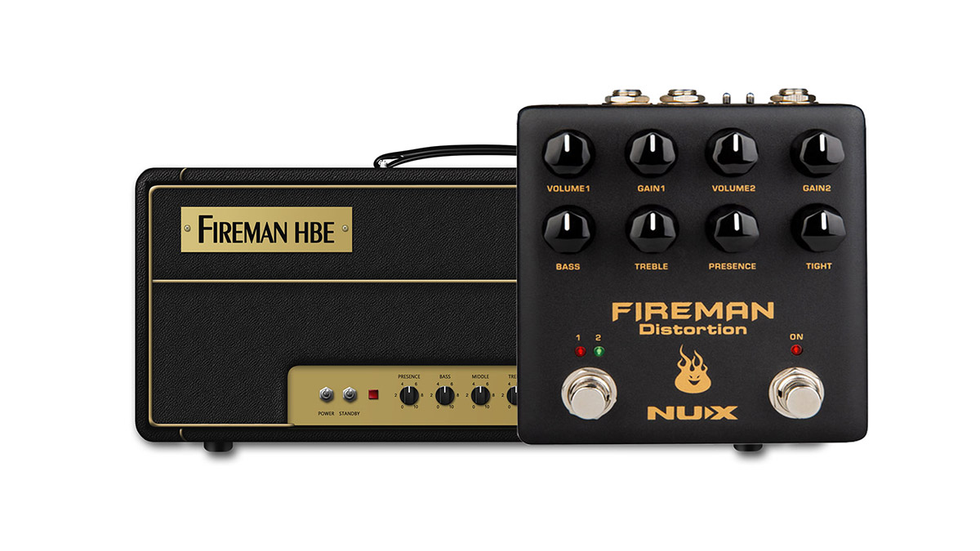
FIREMAN is based on the legendary amplifier builder’s famous distortion pedal. It’s a very amp-like distortion pedal with Modern Brown Sound. We designed it with 2 independent VOLUME, GAIN control knobs to fit rhythm and solo applications. FIREMAN offers a True-bypass / Buffer-bypass toggle switch, and a 9V / 18V toggle switch. The 18V position doubles the working voltage inside to give you wider dynamic range.
A Father’s Cherry Wood Becomes a One-of-a-Kind T-Style
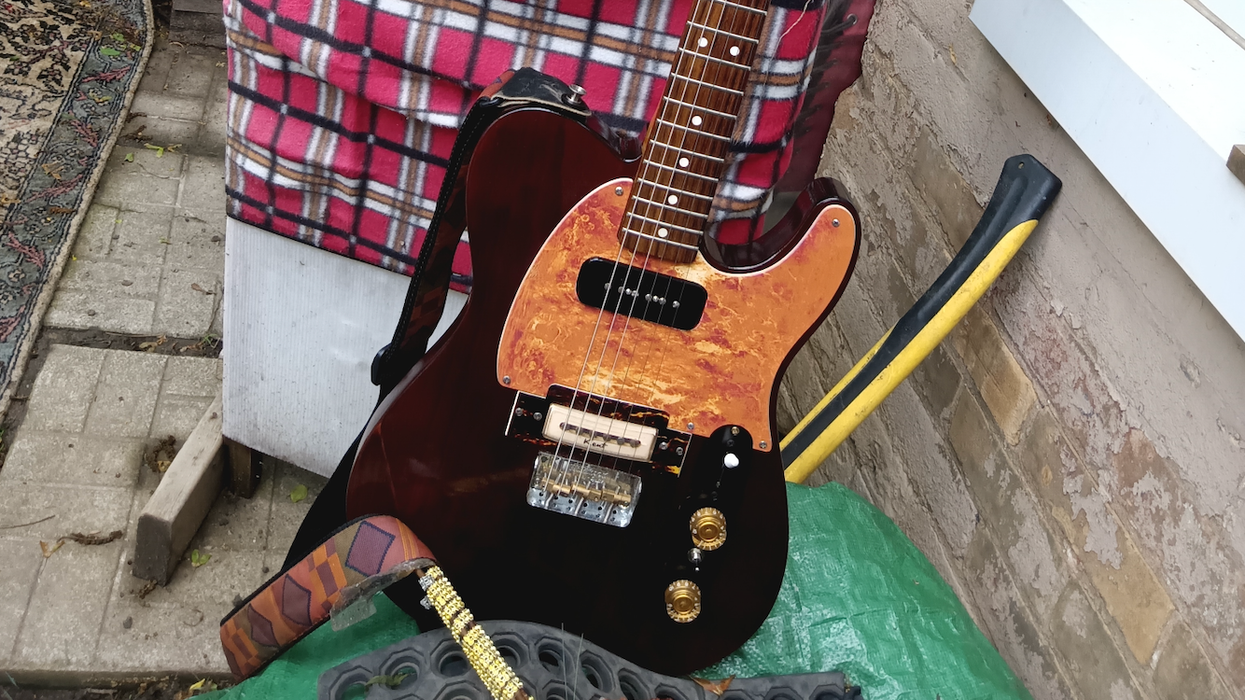
My dad, Al, was a skilled carpenter who did all manner of woodworking, including reproductions, cabinetry, and custom jobs. In the early ’70s, he and my uncle Bruno harvested a pile of walnut and cherry logs at a sawmill in Erin, Ontario. I went along, and it was a fantastic experience. The entire mill, both the main rip and cutoffs, was powered by a John Deere two-cylinder tractor with a 20-foot belt attachment. Wow!
Reader: Kirk Gresser
Hometown: Brantford, Ontario
Guitar: Alcaster
The planks were stored at my uncle John's farm for 10 years, and two brothers who assumed the business name Flintstone and Kramden (honoring Jackie Gleason, of course) decided to use them, along with butternut they purchased, to make a series of grandfather clocks. The guts of the clocks were from Germany, so they were costly, and then Ethan Allen came along and that was that for the clock business. Still, they made quite a few clocks, and by the time they were done there were just a few planks of the original wood left over. After my Dad passed I inherited three of them.
I wanted to use them to build a guitar, but having no experience in that world, I reached out to a talented local luthier, Jesse Livingstone. I gave him the cherry planks to shape the body, which would be his first electric-oriented project. I wanted a T-style but tend to find traditional Telecaster bodies chunky, so I used a 1/4" thinner Squier Telecaster as a template. Jesse also carved a Stratocaster-like belly and forearm cuts, and so the body feels much more like my Stratocasters—in other words, perfect.
“I wanted a T-style but tend to find traditional Telecaster bodies chunky, so I used a 1/4" thinner Squier Telecaster as a template.”
An inventive local amp repairman, Pete Vanderveen, installed the rosewood Squier neck, and stuck a Seymour Duncan P-90 in the neck position and a ’60s Kent single coil, which reminded me of an old Kelvinator refrigerator handle, in the bridge. The Wilkinson bridge enables stringing through the body or as a top-loader, and two Gibson speed knobs serve as volume controls for each pickup. Pete also installed a series/parallel switch.
The pickguard, made by Greasy Grooves, is designed to resemble rust. I had hoped to match the cherry red of George Gobel’s Gibson L-5 but couldn’t find the exact color, so I used burgundy leather dye and five coats of lacquer. The result, which I call the “Alcaster,” looks like black cherry. The whole guitar comes in at a light 7.5 pounds. With D'Addario .011-.049s, the guitar delivers a Les Paul-like tone on the neck pickup, while the combined sounds go from round to Howlin’ Wolf.
As for me? I've been writing songs for 50 years (not one of them has bought me so much as a cup of coffee) under the name Purple Joe. Imagine Mark Knopfler, Jimi Hendrix, and Neil Young playing poker with Scott Merritt and Carole King—and losing!
Podcast 519: Vilray
On this week’s Fretboard Journal Podcast, we’re joined by New York City-based guitarist and composer Vilray Bolles.
Alongside Rachael Price of Lake Street Dive, he’s one half of Rachael & Vilray, a duo with an uncanny knack for writing brand new songs that feel like they came straight from Tin Pan Alley. On their latest release, West of Broadway, the duo was inspired by both classic musicals and West Coast jazz. They even roped in Stephen Colbert for a cameo on the album.
During our chat, we talk about Vilray’s love for jazz, his days of busking (and the downside of cell reception at subway terminals), meeting Rachael at Boston’s New England Conservatory of Music, how they recorded West of Broadway and so much more.
Bonus: Watch Vilray perform “Forever Never Lasts” solo from West of Broadway!
Our new, 57th issue of the Fretboard Journal is now mailing. Click on the Subscribe link above to get it.
Our next Fretboard Summit takes place August 20-22, 2026, at the Old Town School of Folk Music in Chicago. https://fretboardsummit.org
We are brought to you by: Stringjoy Strings: https://stringjoy.com
(Use the code FRETBOARD to save 10% off your first order)
Mike & Mike’s Guitar Bar: https://mmguitarbar.com
Peghead Nation: https://www.pegheadnation.com (Get your first month free or $20 off any annual subscription with the promo code FRETBOARD at checkout).
The post Podcast 519: Vilray first appeared on Fretboard Journal.
Luthier on Luthier: StewMac’s Brock Poling And Gene Imbody
On Episode 106 of the Luthier on Luthier podcast, I’m joined by Brock Poling and Gene Imbody from Stewart-MacDonald—the original luthier supply company.
Brock and Gene take us behind the scenes to show how StewMac tools and products are developed, from the first idea all the way to delivery. We also discuss the company’s history and where they envision it heading in the future.
Luthier on Luthier is hosted by Michael Bashkin of Bashkin Guitars and brought to you by the Fretboard Journal. This episode is sponsored by Dream Guitars and StewMac.
Want to support Luthier on Luthier? Join our Patreon to get access to exclusive photos and content from Michael and his builds.
The post Luthier on Luthier: StewMac’s Brock Poling And Gene Imbody first appeared on Fretboard Journal.


